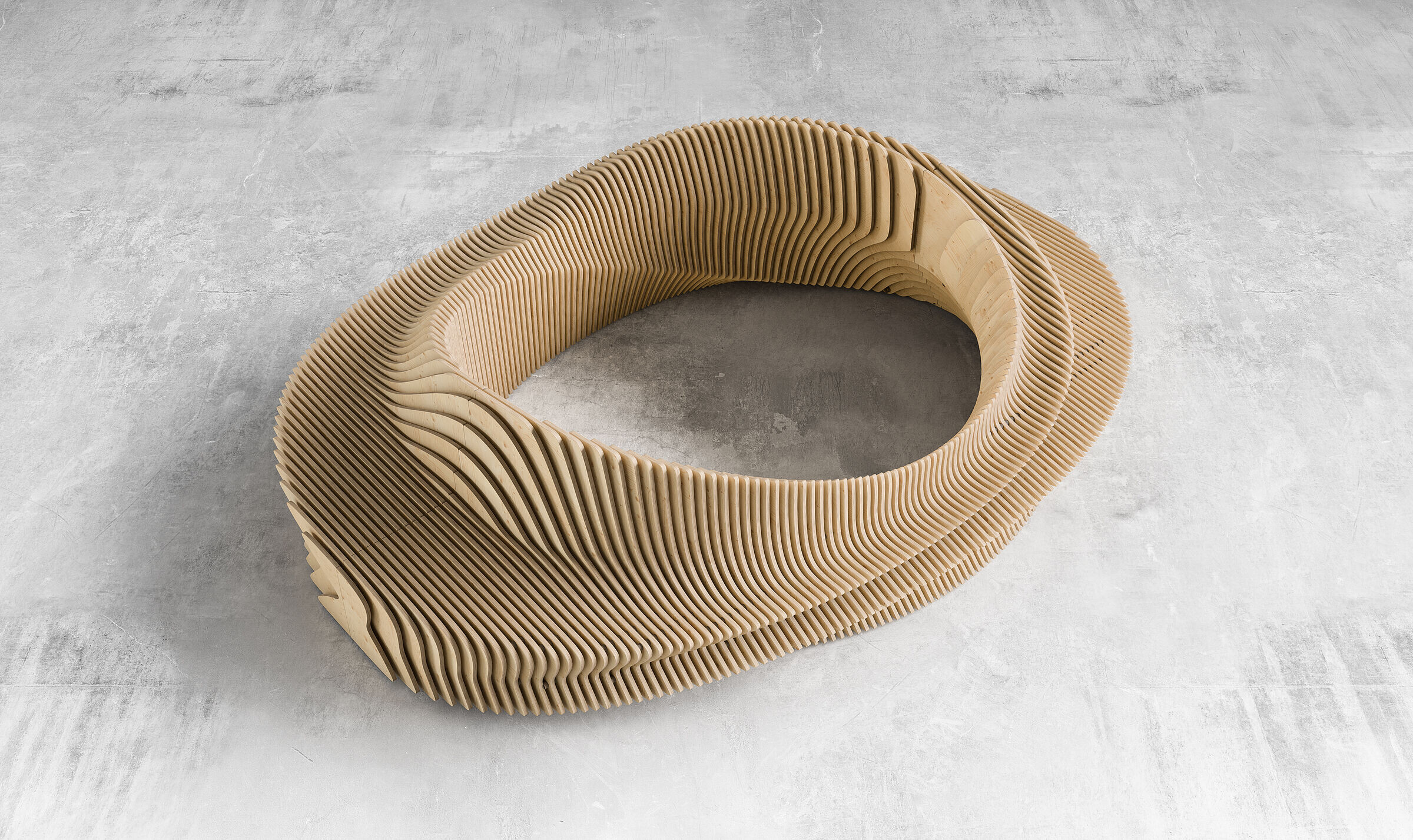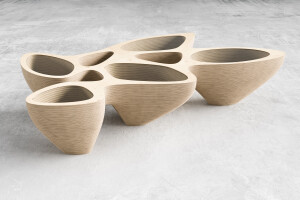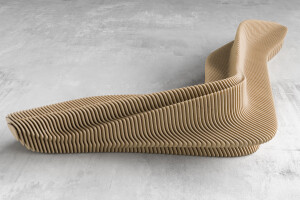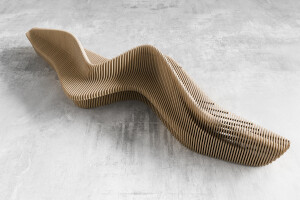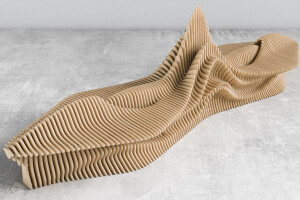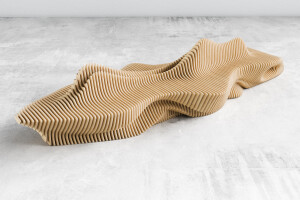In 2019, we were commissioned to create a series of sculptural benches for Sahara Mall in Riyadh, transforming public seating into an artistic and functional experience. The project brought together parametric design, advanced digital fabrication, and meticulous craftsmanship, resulting in a collection of 16 benches and 6 Rain Gatherer tables.

Parametric Design: The Intersection of Math and Art
At the heart of the project was parametric design, an approach where complex forms are generated using algorithms and computational modeling. Unlike traditional furniture, these benches were not drawn by hand but calculated through precise mathematical formulas, allowing organic, fluid shapes that feel both natural and futuristic.

This method enabled us to experiment with curved geometries, seamless transitions, and ergonomic forms, creating benches that were both visually striking and comfortable. The designs were inspired by nature—flowing water, the spiral of a shell, the curve of a Möbius strip—bringing a dynamic energy to the mall's public spaces.
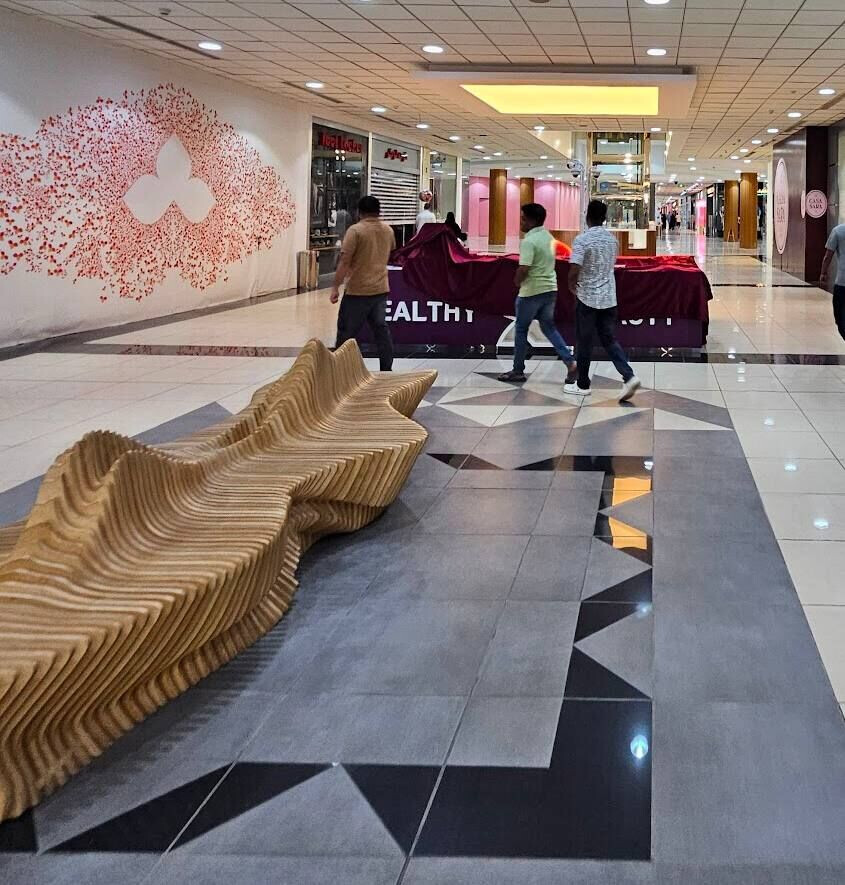
From Digital Model to Physical Form
While parametric design allowed us to generate intricate forms, turning them into reality required a mix of high-tech manufacturing and detailed handcrafting:
Digital Modeling & CNC Milling
The benches were designed in 3D software, ensuring precision in every curve.
Components were cut using CNC (computer numerical control) milling, transforming raw material into precisely shaped pieces with minimal waste.
Hand Finishing & Assembly

After CNC cutting, each piece underwent extensive handwork—sanding, polishing, and smoothing the surfaces to achieve a flawless finish.
Special coatings were applied for durability and aesthetics, ensuring the furniture could withstand daily use and Riyadh’s climate.
The final step was careful assembly, merging organic curves seamlessly into unified sculptural forms.
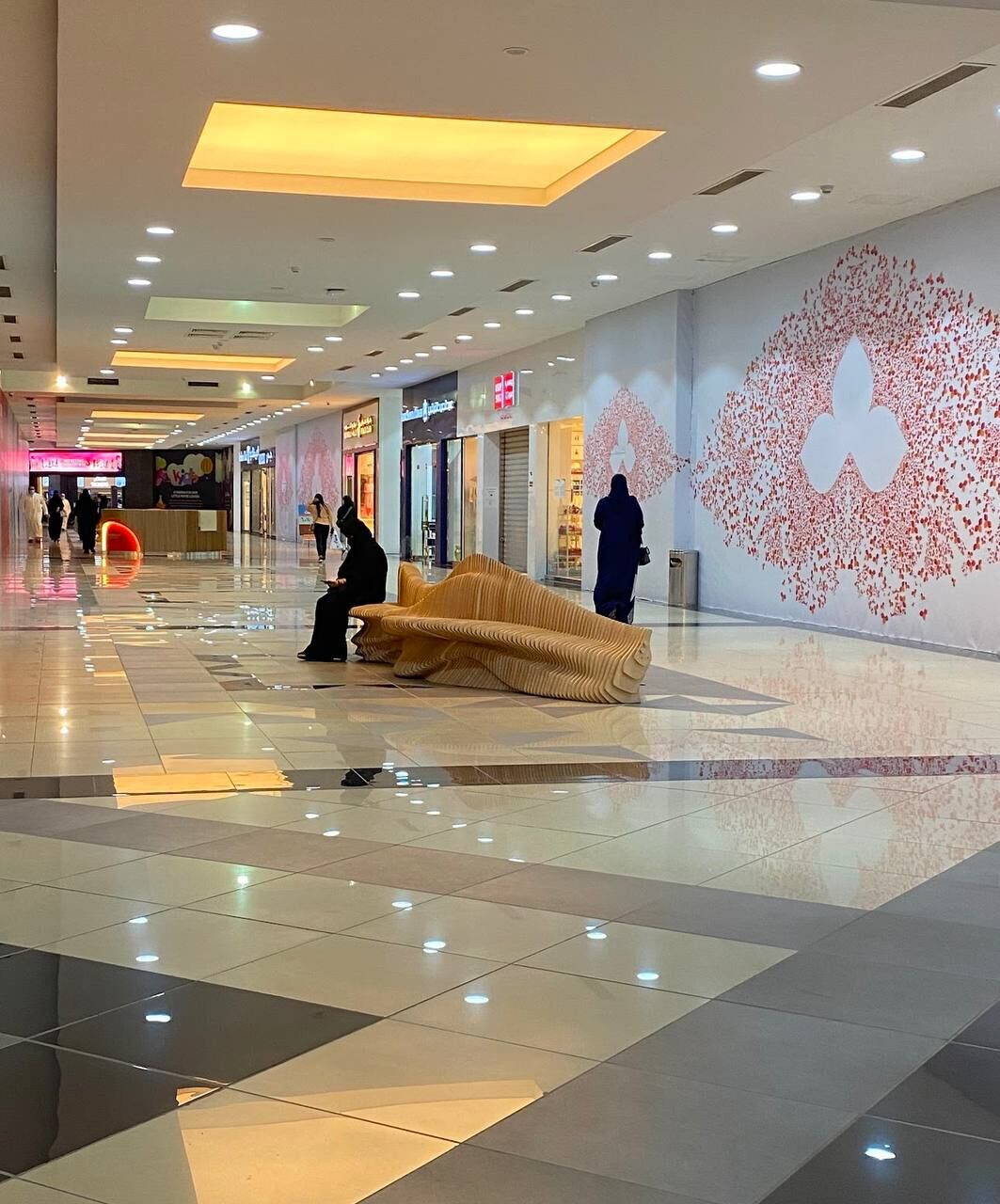
A New Standard for Public Spaces
By combining parametric design, digital precision, and artisan craftsmanship, this project redefined what mall furniture could be. Instead of generic benches, visitors to Sahara Mall encountered functional sculptures—pieces that invited people to sit, admire, and engage with their surroundings in a new way.
This project was more than furniture—it was a fusion of technology, design, and craftsmanship, proving that even everyday objects can become works of art.

